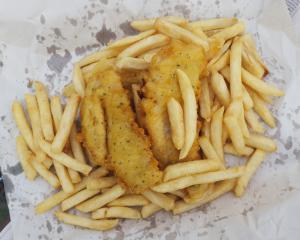

No-one knows quite how much food is wasted in the hospitality and catering sector, although Associate Prof Miranda Mirosa’s students in the department of food science at the University of Otago, along with the WasteMINZ Association, have done some initial research.
A series of 24-hour audits across the country, as well as looking at what was being wasted and why, found 60% of waste was from food preparation, 33% was left on a plate and 7% was spoiled food. This worked out to be about 24,372 tonnes annually.
However, there was a huge variation between establishments, showing some were better at minimising waste. That indicated there was room for improvement, Prof Mirosa said.
‘‘It’s about training chefs to use everything, every part of the animal and every part of the vegetable, being innovative in using leftovers and building them back into the menu.’’
People were becoming aware of the issues and implications of food waste, the waste of resources in producing, distributing and preparing it, the landfill it took up, and hunger in this and other countries. The United Nations’ sustainable development goal number 12 aims to reduce global food waste by 50% by 2030.
An American report, ‘‘The Business Case for Reducing Food Loss and Waste’’ (Hanson and Mitchell 2017), reported that for every dollar the hospitality sector invested in reducing food waste, the median economic return was $14.
‘‘That’s a pretty powerful message to business,’’ she said.
While the hospitality sector was facing many pressures, monitoring and reducing waste was relatively simple.
‘‘Some of these initiatives are not difficult, like incorporating a bit of broccoli stem on to the plate, or using leftover food, or offering half portions or doggy bags,’’ she said.
‘‘I think the sector is quite excited, being seen to do things on the sustainability front without having to have some of the more difficult conversations such as reducing or removing meat from the menu. I don’t want to dismiss those conversations — those discussions are all incredibly important, too. It’s just the food waste reduction one is currently more palatable for many.’’
One of the first things cafes and restaurants could do was measure their current waste. Just knowing how much food was being wasted had been shown to lead to a change in behaviour, she says.
Many businesses had no idea how much they were wasting, as it all went into one prepaid bin. Unless the manager was in the kitchen, he or she would not see this.
Some bigger organisations such as the New Zealand Defence Force’s catering service were using apps to measure and reduce waste. Every time something went back to the kitchen, it was weighed and noted before being put in the bin.
Prof Mirosa suggested restaurants and cafes could provide guidance on portion sizes, reduce portion sizes and offer half servings, as well as be explicit about what sides came with the main.
Plastic models of the food not only showed customers what the food looked like but also portion size. This was more useful than describing the weight of the meat or pasta, she said.
Allowing people to take leftovers home in a doggy bag was another obvious and easy way to reduce waste.
‘‘There is no legal implication of offering a doggy bag in New Zealand, though there is still a bit of perception in the industry that they are not allowed to do it, but that’s not correct,’’ she said
Some restaurants which had tried to say it was not allowed had ended up with angry customer reviews on social media and changed their attitudes.
‘‘It’s not just allowing doggy bags but offering them and having appropriate containers available. In the UK there were compostable cardboard boxes branded with ‘Love food hate waste’ logos and instructions for refrigerating and reheating.’’
Another way cafes and restaurants could reduce waste was to review their policies about having their cabinets full right up to closing.
There were apps such as Olio (which works in Dunedin) and Foodprint and Ywaste that allowed businesses or individuals who had surplus food to post what they had left — say, five muffins and two cupcakes — an hour before closing so whoever was following could pop-in and pick them up at a discounted price, she said.
Some areas had community fridges or street pantries where people could leave their surpluses. There is one at Tonga Park in South Dunedin.
Some people were capitalising on our growing awareness of food waste by explicitly branding certain products as ‘‘up-cycled’’ or ‘‘waste-friendly’’ instead of just reusing things discretely, Prof Mirosa said.
Producing food from waste byproducts was not new — the dairy industry made whey protein from byproducts — but new products specifically marketed as being upcycled or food-waste friendly appealed to eco-aware consumers.
In Dunedin Gilbert’s Fine Foods made treberbrot (spent grain bread) using used grain from the New New New craft brewery. Keep an eye open for more up-cycled foods as the trend grows.
Food wastage
- New Zealanders, on average, waste almost 32kg of food every year
- The country throws out over 157,000 tonnes of food, which costs $1.17billion to buy
- The top three wasted foods are bread, leftovers and citrus (oranges and mandarins)
Seasons - By Alison Lambert - Available for purchase now!

The Otago Daily Times and Alison have collaborated to bring you her first cookbook – Seasons.
This book is the ultimate year-round cookbook. Seasons is filled with versatile recipes designed to inspire creativity in the kitchen, offering plenty of ideas for delicious accompaniments and standout dishes that highlight the best of what each season has to offer.
$49.99 each. Purchase here.
$44.99 for ODT subscribers. Get your discount code here.













